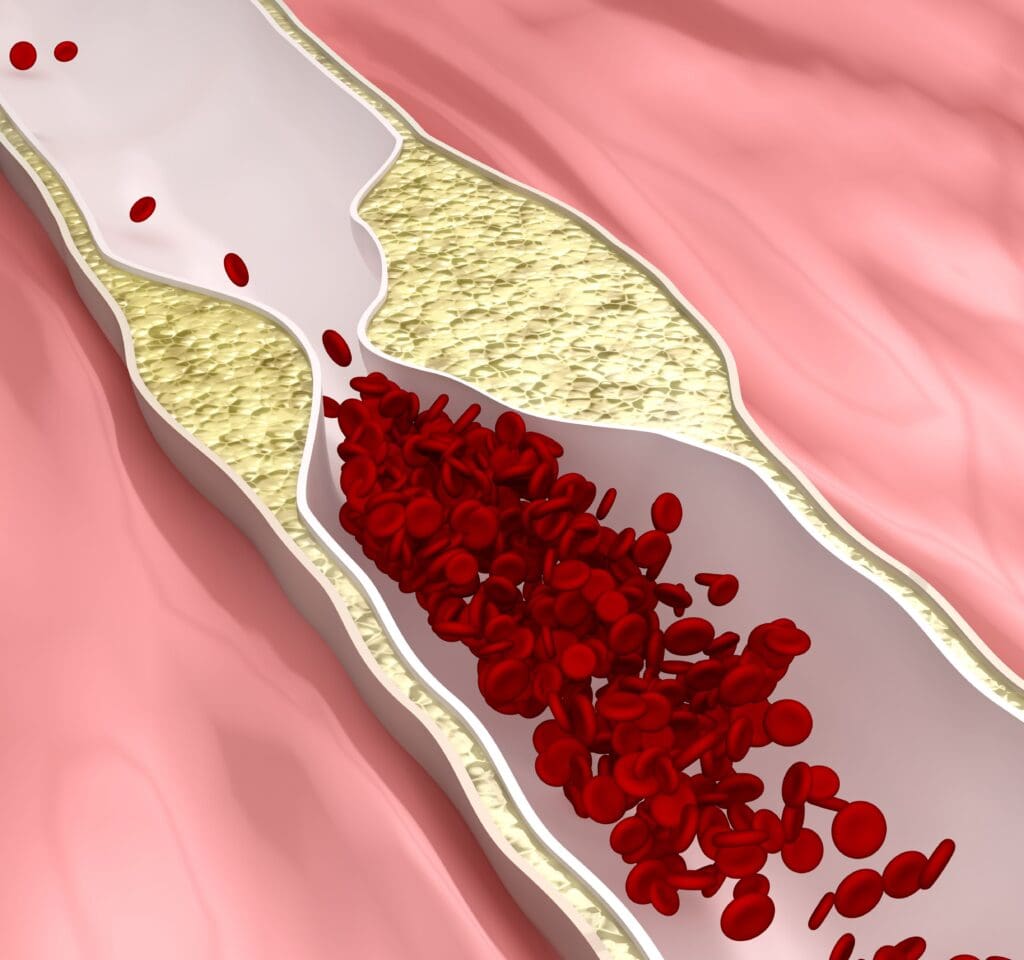Are You Suffering From Peripheral Artery Disease?
Peripheral Artery disease is a condition characterized by blocked arteries due to a buildup of cholesterol. Dr. Robert Handley, the PAD Specialist, has over two decades diagnosing and treating peripheral artery disease at his office near Dallas, TX. If you suffer from Peripheral Artery Disease and are looking for the best PAD treatment in the Dallas area, contact North Texas Vein & Vascular to schedule your consultation.


Understanding Peripheral Artery Disease (PAD)
PAD is a serious condition that affects up to 10 million Americans. Commonly occurring in the legs and pelvis, peripheral artery disease is the most common form of peripheral vascular disease (PVD). It is a narrowing or blockage of the arteries that supply oxygenated blood to the outer areas of the body. The main culprit in developing PAD is atherosclerosis; a build-up of plaque along the arterial wall resulting in arteries becoming thick and stiff. PAD may also be a hereditary condition associated with obesity, lack of physical activity, smoking, diabetes, hypertension, and aging (over 60).
Common Symptoms of PAD
When the arteries of the legs become narrowed or blocked, you may start seeing signs of PAD. Typical symptoms experienced include leg pain with walking, leg pain at rest, and open wounds that will not heal along with potential tissue loss. Other symptoms of PAD include:
- Claudication: Pain, tightness, weakness or cramping in legs after exercise
- Numbness or coldness in outer extremities including legs, arms, fingers and toes
- Thinning or loss of hair on arms or legs
- Ulcers on the skin
- Loss of sensation in the arms or legs
- Muscle spasms
- Erectile dysfunction


Treatment Options for PAD
Patients suffering from Peripheral Artery Disease can be treated as an outpatient procedure at our office near Dallas. Dr. Handley offers comprehensive treatment options, including in-office procedures for same-day treatment. After the cause is identified, a treatment plan is developed by our team that’s best for your specific case.
Advanced non-surgical treatment procedure options include:
- Atherectomy – Opens blocked or narrowed blood vessels by removing some of the plaque with a small device inserted into the blood vessel.
- Angioplasty – Performed to further open the blood vessel by inserting a very small balloon into the vessel and inflating it.
- Stenting – The placement of a small metal wire tube into a blood vessel, can be performed if necessary to keep the blood vessel open.
How is PAD Diagnosed?
Ankle-Brachial Index
Proper diagnosis of PAD involves assessing the circulation in the legs and comparing blood pressures of the legs and arms (ankle-brachial index). Using a stethoscope, Dr. Handley can listen and assess circulation in the legs. The strength of the pulse in the legs is also checked. In turn, blood tests may be administered, along with treadmill tests, ultrasound, an MRI, electrocardiogram or an x-ray of blood vessels that have been injected with dye (angiography).
Diagnostic Angiography
This is a minimally invasive diagnostic examination that is used to determine the extent of disease present in the arterial system. A small catheter is inserted into an artery in the groin through a tiny nick in the skin. The catheter is then directed to the area of the body which is to be studied using special X-ray equipment called flouroscopy. Examination of the arteries going to the legs can frequently be done in the office. The exam is also used specifically to diagnose blockages in those arteries.
CT Arteriogram
If a blockage is seen, the appropriate treatment can also be performed at the same time. Often, another procedure called a CT arteriogram will be performed prior to a diagnostic angiography in order to get a basic idea of where the problem may be. The diagnostic angiogram, which is more detailed than the CT arteriogram, can then be focused on the areas that are most likely to be the cause of the problem.
Recovery After PAD Treatment
Later in the day after your PAD procedure, you may go home. If you’re from out of town, you can also go to a Dallas area hotel. You must have a familiar driver, as you will be sleepy from the sedation.
Upon discharge, medications are received for pain management. Patients can expect to begin returning to normal activities within a few days. To check on your recovery, Dr. Handley will also schedule your post-procedure appointments. These appointments typically take place one week post-procedure, and three months post-procedure.
